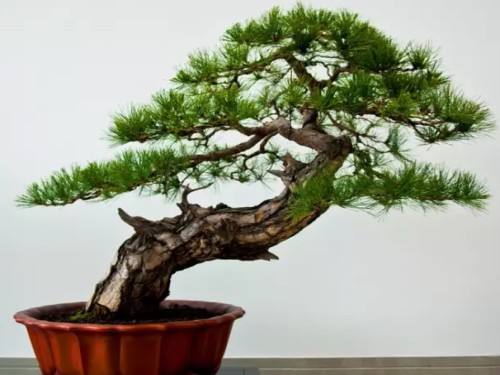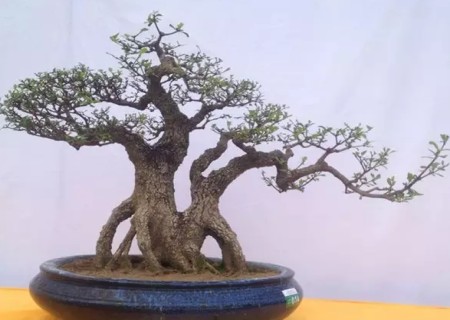Sichuan style bonsai making techniques
Sichuan bonsai is one of the five major schools of traditional Chinese bonsai, which is deeply rooted in the magnificent and beautiful Bashan Shushui. Bonsai production skills represented by Chengdu area are the foundation and core of Sichuan bonsai production skills. Bonsai artists in the middle of Shu are dedicated to enlightenment, careful observation and production skills, so they have formed a unique Sichuan style bonsai modeling rhythm and techniques, which are different from other schools with distinct techniques and artistic features.
Sichuan bonsai, also known as Jiannan bonsai, originated in Shouan Town, Wenjiang District, Chengdu City. It is an excellent traditional art of the Han nationality and a treasure of garden art. It is a bonsai art school named after Sichuan Province, and it is also one of the five major schools of bonsai in China. Among them, it is divided into two local styles of western Sichuan and eastern Sichuan, which is famous for its simplicity and preciseness and Qiu qu. West Sichuan with Chengdu as the center includes Wenjiang, Pixian, Guanxian, Chongqing, Xindu, Shifang and other counties. Eastern Sichuan takes Chongqing as the center, including the counties around Chongqing.

Sichuan style bonsai has a long history, profound cultural heritage, exquisite craftsmanship and strong local characteristics. As early as the period of Shuhan, Lord Liu Zen built an Le Palace in Chengdu, recommended planting trees in the palace, and reproduced the Qifeng dangerous cliff and ancient wood pine in his memory in the pot. Also made of stone, wood bowls of different length and depth, planted with low trees and equipped with rocks, in the palace is "eight" character decoration. Ministers and merchants have followed suit, and this form of landscaping has spread in Chengdu.
Sichuan style bonsai has developed into two forms: the present style and the natural style, with regular style as the main form. The regular style pays attention to the body method, that is, the modeling method of binding the trunk. The natural style is mostly set according to the shape of the stump itself, and there is no specific fixed way, including multi-trunk, single-trunk stump, supine stump, oblique floating stump, small, large cliff stump and so on.
The representative species of Sichuan bonsai include golden marble (bottle orchid), June snow, pedicel crabapple, weeping begonia, plum blossom, crape myrtle, Luohansong, ginkgo, Yanbai, etc., as well as tiger thorn, huangshu, bauhinia, camellia, sweet-scented osmanthus, etc., including Mianzhu, Qiongzhu, Phyllostachys pubescens, Guanyin bamboo, Qinsi bamboo and Buddha belly bamboo.
The shape of Sichuan style bonsai can be divided into two forms: regular style and natural style. Give priority to regular style, because it is the representative of Sichuan style bonsai art. The regular style pays attention to the "body method", and the so-called "body method" is the modeling method of the main body, which is the main feature of Sichuan bonsai art. Like Yang Pai's bonsai, it is cultivated from an early age with Panza skills, which shows the rigorous and Qixiong style of Sichuan Pai bonsai. In Sichuan style bonsai, different shapes have different "body methods". There are ten forms of regular trunk (body method).
The regular pile scene of Sichuan School is modeled according to its traditional banding technique, which has a certain rhythm and numerous names, too numerous to enumerate. Their trunk and side branches are bent in different angles and directions with brown silk from an early age, paying attention to the composition of three-dimensional space, which is more difficult. The forms of stem shape are roughly "rolling dragon holding column", "opposite turning", "square turning", "turning", "three bends and nine inverted turns", "big bending and hanging branches", "straight coronation", "turning turning", "old woman dressing", "comprehensive method" and so on. Flat branch methods are also different from flat branches, rolling branches, half-flat and half-rolling, different trunk shapes and a variety of flat branch methods, various forms, majestic and dignified tree shape. Some pile scenes, if the knight looks back, have the name of "looking at Jingzhou immediately".
1. Opposite crutches
Also known as straight crutches, the trunk bends back and forth, usually only one trunk, and the trunk turns back and forth. This kind of stump can see all the bends of the trunk of the stump from the front, gradually turn to the side, the bend gradually becomes smaller, turn to the front and side, do not see the bend of the trunk of the stump.
2. Rolling dragon pillar
Referred to as rolling dragon method, also known as spiral bending. The first and second turns are the same as turning, and the third turn spirals up.
3. Square crutches
Also known as "Chinese" crutches. The trunk bends back and forth, quite like a turning, but the curved bend is flat into a square shape on the missing side, similar to the "bow" posture. Starting from the base of the trunk, such as turning the shape to the top to count nine bends, sometimes divided into two and three times. Then from the side of the bend, from the base to the top of the trunk into three large bends, for the front. As the tree stump of the three-bend and nine-turn method moved from one side to the other, the landscape changed step by step and showed vitality.
4. Large curved drooping branches
Also known as the big turning strip method. Turn the trunk into a big bend, and after the bend, remove all the trunk on the top of the bend and all the branches on the whole bend, and sometimes leave a branch on the back of the bend, the back of the foot and the branch of the upper part of the foot, but when the branch falls, it must be able to cut into three or four plates, or at least three plates, otherwise, it will be cut off.
5. The method of turning and falling off
Also known as the method of amusing and falling off the body. The upper end of the trunk is sawed off, leaving only the base (30-60cm). After sending out robust new branches, a sturdy branch is selected as the trunk and the side branches are used as the forefoot plate.
Time: 2019-06-04 Click:
- Prev

The production method of Su Pai Bonsai
Suzhou is located on the shore of Taihu Lake, with beautiful mountains and green waters, beautiful scenery, humid climate and abundant rainfall, so there is a rich variety of plants available for bonsai production. Suzhou is also rich in all kinds of rocks suitable for landscape bonsai, such as Taihu Lake Stone, Kunshan Baibai, Suzhou Huangshi and so on.
- Next

The trend of branches of Lingnan bonsai
Lingnan bonsai has always paid attention to branch support ability and its trend, whether it is good enough or not depends on whether your branch support can be cut off and store branches, which is certain and beyond reproach. The trend of the branch support is directly related to the layout and inherits from each other. Truncation is relatively speaking, either truncation or truncation
Related
- Fuxing push coffee new agricultural production and marketing class: lack of small-scale processing plants
- Jujube rice field leisure farm deep ploughing Yilan for five years to create a space for organic food and play
- Nongyu Farm-A trial of organic papaya for brave women with advanced technology
- Four points for attention in the prevention and control of diseases and insect pests of edible fungi
- How to add nutrient solution to Edible Fungi
- Is there any good way to control edible fungus mites?
- Open Inoculation Technology of Edible Fungi
- Is there any clever way to use fertilizer for edible fungus in winter?
- What agents are used to kill the pathogens of edible fungi in the mushroom shed?
- Rapid drying of Edible Fungi

